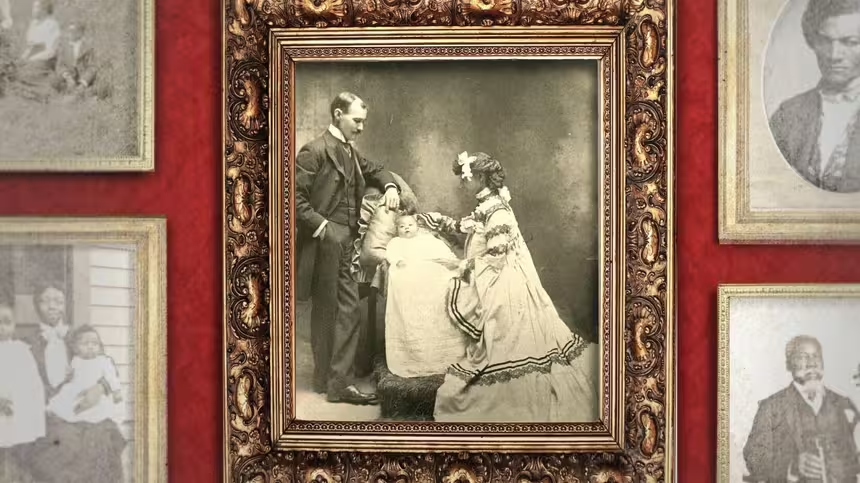
The Women of Polaroid
Clip: Season 37 Episode 3 | 3m 8sVideo has Closed Captions
The women behind the camera.
At a time when there were few jobs for women in technology, Edwin Land filled the ranks at Polaroid with recent graduates from Smith College, a small women’s liberal arts college in Massachusetts.
Problems playing video? | Closed Captioning Feedback
Problems playing video? | Closed Captioning Feedback
Corporate sponsorship for American Experience is provided by Liberty Mutual Insurance and Carlisle Companies. Major funding by the Alfred P. Sloan Foundation.

The Women of Polaroid
Clip: Season 37 Episode 3 | 3m 8sVideo has Closed Captions
At a time when there were few jobs for women in technology, Edwin Land filled the ranks at Polaroid with recent graduates from Smith College, a small women’s liberal arts college in Massachusetts.
Problems playing video? | Closed Captioning Feedback
How to Watch American Experience
American Experience is available to stream on pbs.org and the free PBS App, available on iPhone, Apple TV, Android TV, Android smartphones, Amazon Fire TV, Amazon Fire Tablet, Roku, Samsung Smart TV, and Vizio.
Buy Now

When is a photo an act of resistance?
For families that just decades earlier were torn apart by chattel slavery, being photographed together was proof of their resilience.Providing Support for PBS.org
Learn Moreabout PBS online sponsorshipThere are hundreds of them.
Photos taken in low light and bright light.
In hot rooms and in cold.
Using specialized materials from acetate to titanium dioxide.
The project that produced them was called SX70, where the “SX” stands for “special experiment.” And these women were at the center of itbut not because they were models.
Their most important role was actually behind the camera.
That's where all of them helped create one of the greatest corporate success stories of the 20th century: Polaroid.
It all starts with genius inventor Edwin Land.
While on vacation in 1943, Land had the inspiration for a camera that would let you seeinstantlythe photo you'd just taken, something that had never been done before.
The trick was finding the right staff to help him realize his vision.
Land was open to hiring talent wherever he could find it.
And the unexpected source of some of Polaroid's key employees was Smith College, a small women's liberal arts college in Massachusetts.
The even more surprising thing about the staff recruited from Smith?
Most of them weren't trained in business or the sciences.
Land didn't care that the Smith grads weren't technicians yet.
Polaroid, which was based in Cambridge, could send its new hires to MIT and Harvard for all the chemistry, physics and optics classes they needed.
He knew that combining the young women's artistic backgrounds with technical skills would make them research and development powerhouses.
Eudoxia Muller was hired straight out of Smith, where shed written her senior thesis on 3D imaging techniques, and in 1943 staffed the lab where SX-70 was born.
In December of that year, she became the first person in the world to see an instant picture.
Two years later another Smith grad—one who would become extremely important to the company—joined the project.
Her name was Meroë Marston Morse.
And within only a few years of starting at Polaroid, she rose to run the lab in charge of photographic materials.
At a time when next to no women held C-Suite roles, she became Lands advisor and confidante, co-signing patents as a key contributor to the company.
Land asked everything of his employees.
Work was life, and life was work.
No one promoted the companys work ethic more than Morse, who ran her lab literally around the clock.
She embodied what Polaroid was all about: relentless curiosity and effort.
Morse once wrote to Land, “A day is all too short.
It always seems to me that we just really get warmed up to our problems and then its time to quit.” But the truth is that the women behind the camera never did.
And because of their dedication, Polaroid became a multi-billion-dollar business that forever changed the culture, even after its prints had long since faded.
To learn more about Meroë Morse and the other women who made Polaroid click, check out Mr. Polaroid, from American Experience.
Video has Closed Captions
Preview: S37 Ep3 | 9m 18s | Watch a preview of Mr. Polaroid. (9m 18s)
Why do people shake Polaroid pictures?
Video has Closed Captions
Clip: S37 Ep3 | 1m 58s | We were told to "shake it like a Polaroid picture". But what if we got it wrong? (1m 58s)
Video has Closed Captions
Preview: S37 Ep3 | 1m 45s | The story of Edwin Land, whose iconic Polaroid camera let everyone instantly chronicle their lives. (1m 45s)
Providing Support for PBS.org
Learn Moreabout PBS online sponsorshipSupport for PBS provided by:
Corporate sponsorship for American Experience is provided by Liberty Mutual Insurance and Carlisle Companies. Major funding by the Alfred P. Sloan Foundation.




















